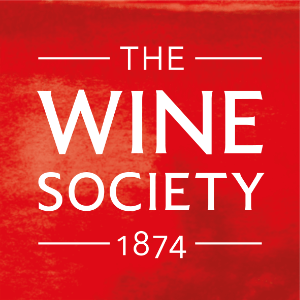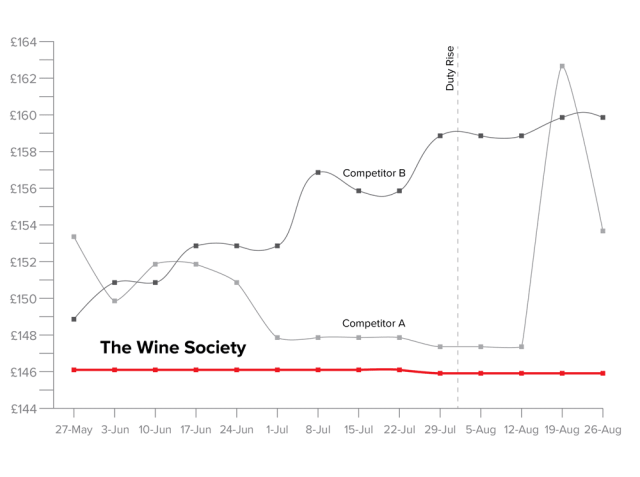This website uses cookies so that we can provide you with the best user experience possible. Cookie information is stored in your browser and performs functions such as recognising you when you return to our website and helping our team to understand which sections of the website you find most interesting and useful.
How a modernised Wine Society hopes to attract members
A modernised Wine Society wants to raise awareness, attract new members, and introduce more own-label wines as it approaches its 150th anniversary, according to its CEO, Steve Finlan.

Speaking to the drinks business at the The Wine Society’s first ever press dinner in London last week, Finlan said that the retailer, which is owned by its customers, was ready to make a series of changes following a period of significant investment.
“We are now in a position where we can afford to do business properly,” he said, adding, “We have a bit more cash now.”
This follows a £40m investment since Finlan joined the mutual, mail-order wine business back in 2018, which has been spent on restructuring the retailer’s IT system and building a fifth warehouse for wine storage – ensuring it no longer needs to rent outside space, which it was doing at a cost of £1 million per year.
As Finlan said, “Our wine range was in a really good shape, but the business wasn’t.”
Continuing, he admitted, “We were struggling for space, and we had to re-platform our website.”
Now, however, he said, “We are a very efficient, modern retailer that is able to create even better value for our members.”
This includes free delivery on wine ordered in any quantity, and reduced margins on wine following the retailer’s decision to hold prices despite duty increases in the UK, which saw 44p added to a 75cl bottle in August.
“We were planning to reduce prices, but, because of the chancellor, we decided to hold them,” he said, referring to still wine, while sparkling wine has in fact become 19 pence cheaper at The Wine Society – in line with the drop in duty.
The retailer, which is not only a mutual business, but a non-profit-maximising one too, appears to be an anomaly in its decision to pass on duty savings in sparkling, while absorbing duty rises in still wine.
Indeed, Finlan, ahead of the press dinner on Tuesday 19 September, noted that he was both “surprised and shocked” at the price rises on wine at other, rival retailers in the UK since the duty increases were imposed, while stressing that there also appeared to be no signs of passing on the drop in tax on fizz (see graph, bottom).
His view is that supermarkets and multiple specialist wine retailers may be creating “falsely high prices to discount” – a ploy to entice UK shoppers into buying wine on price cuts that look big due to inflated headline prices.
But the Wine Society model is focused on providing everyday low prices, while giving its buyers “freedom” to explore the world when revising ranges. The retailer is also dedicated to providing reliable and free delivery, and excellent customer support – a service that’s operated by people, so there’s always a person’s voice at the end of the line.
“Any surplus goes back to wine pricing or service,” said Finlan, before commenting, “My vision is to continue to reduce margins over time.”
Nevertheless, The Wine Society “still has a very expensive member services function,” according to Finlan, who believes this is a key “point of difference” for the business, and one he seeks to retain because “my gut feeling tells me that human contact at the moment is incredibly important.”
It’s such benefits, that all come from a £40 upfront fee to join The Wine Society – although half of that can be redeemed against the first order – that Finlan wants to see gain more recognition.
“We are often described as a ‘best kept secret’, but we have no real desire to be a ‘best kept secret’,” he said, noting that it’s a “struggle” to spread The Wine Society’s message to non-members.
But that’s also because the retailer has not invested in gaining new members, nor does it advertise.
“Last year we spent zero on customer acquisition, and there are retailers spending £20 million on acquisition,” he said.
However, he added, “Now we are starting to spend on digital acquisition,” in a bid to increase the retailer’s number of ‘active’ members to greater than its current 175,000 (of a 250,000 total), but not beyond 280,000 – at which point the business “would have to change its buyer model”.
It is also looking at running some “pop-up” shops next year to mark its 150th anniversary, augmenting its current bricks and mortar retail offer – a shop called the Cellar Showroom at the Society’s offices in Stevenage.
Since the business was founded in 1874, Finlan said that there have been 500,000 members during its near 150-year history, and stressed that “we don’t want growth for growth’s sake”.
In terms of make-up, the average age of the Wine Society member is approaching 60, with new members approaching 50, while 78% of the total is male, but closer to 50:50 for new members, who are “a really eclectic mix”, according to Finlan.
As for the retailer’s range, head wine buyer Pierre Mansour said that it totals 1,700 lines, with a “core range” of 600, and 120 own-label wines, with a average bottle price of £12 – which is around double the UK market average.
“We do a great job at £8 to £100 per bottle,” said Mansour, commenting that this was different to a rival such as Berry Bros & Rudd, who are “very good at the top end,” as well as in contrast to Majestic, “who are very good at the entry-level.”
He also said that the Wine Society alone represents 10% of UK off-trade wine sales in the £10-20 price range.
In terms of further future changes, the business is looking to increase the number of bottles it sells at 420g – as part of a packaging light-weighting push – as well as start carbon insetting. It also plans to add a new higher-priced level to its own-label range, which is currently a two-tier offer, with The Society’s ‘Exhibition’ brand the better option.
Mansour also said that the retailer would be doing “museum releases” over “the next few years” as it starts to sell some of its mature stock of fine wines that are held in storage by the business since they were released.
“We see a real opportunity to sell aged wines that have been shipped and stored in perfect conditions, with full traceability,” he said.
This will begin next March with 25 wines, with a minimum of five years of age for the reds, and three years for the whites, taking in bottles from places such as Greece and Austria.
Also, specifically to celebrate 150 years since The Wine Society was founded, the mutual retailer is planning to launch 12 wines that represent its first 50 years in business, followed by another 12 to reflect the next 50 years, and then a further 12 to represent the most recent 50 years.
Finlan added, “And then we are planning a ‘wild card’, which will be the 12 future stars of the next 50 years,” which may include an English Pinot Noir and a cross-country blend, taking in Syrah from the Northern Rhône and Australia – which will be made by Michel Chapoutier.
Finally, in terms of current areas demanded by Wine Society customers, Mansour mentioned a particular call for “ice-bucket reds”, by which he meant lighter styles that can benefit from chilling, such as Cabernet Franc from the Loire, Beaujolais and “light, crisp Grenache from warmer climates.”
He also singled out Champagne as “doing very well” as people choose to “treat themselves” while describing Cava as “another big growth area – at last”.
Continuing, he said that “Italy is flying for us, and has seen the biggest increase for both whites and reds,” while Portugal is doing well too, because it offers “amazing value”, and New World Chardonnay “is growing”, be it from Australia, New Zealand or the US, with the latter country the source of the retailer’s popular Exhibition Sonoma Chardonnay, according to Mansour.
More generally, Finlan said that today’s Wine Society is “bolder and more confident”. The next step is to find new members as the business celebrates 150 years since it was founded in 1849.


